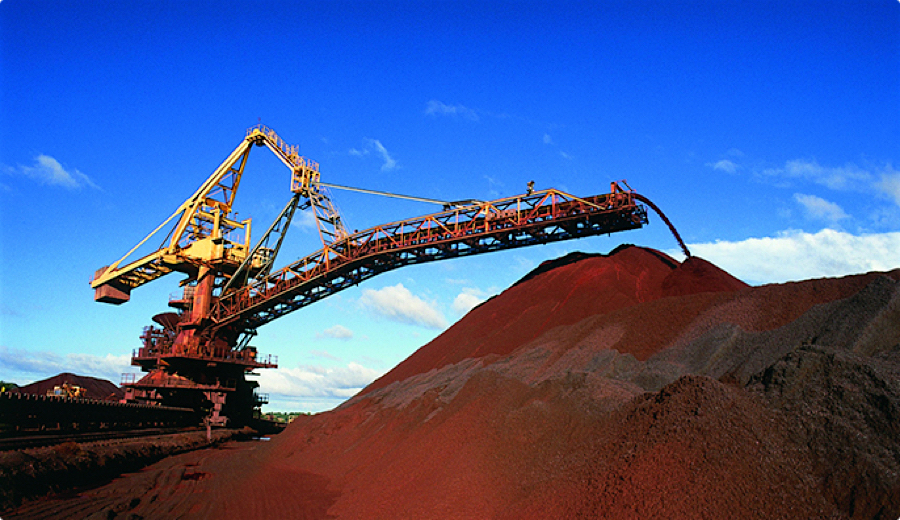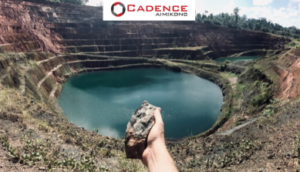 For the key steelmaking ingredients of iron ore and coking coal, it was a tale of two different markets this week.
For the key steelmaking ingredients of iron ore and coking coal, it was a tale of two different markets this week.
The price of iron ore punctured the $US120 per tonne ($164.70/tonne) barrier this week, its highest since early 2014
This was on account of a stronger market for steel in China which is targeting massive investment in its infrastructure.
For the 62 per cent grade iron ore fines product, spot prices were transacting around $US121.75 per tonne, according to Metal Bulletin.
A week ago, iron ore cargoes delivered to ports in China were trading around $US116.85 per tonne, the price reporting agency said.
There are market indications that China’s demand for iron ore will remain strong over the course of the economic cycle.
A dozen Chinese steel companies have struck long-term supply agreements with Fortescue Metals Group (ASX:FMG).
The deals were agreed on the sidelines of the China International Import Expo and included FMG shareholder, Hunan Valin Iron & Steel Group.
Other steel firms in China such as Baotou Iron & Steel Group, and Rizhao Steel also signed agreements for FMG’s iron ore.
“China’s steel industry continues to outperform expectations, with crude steel production in the nine months to September 2020 reaching 782 million tonnes, and annual steel production expected to exceed 1 billion tonnes in 2020,” FMG chief executive Elizabeth Gaines said.
Prices for steel products in China climb on rising demand
Steel product prices in China are starting to rise, as are futures prices for hot rolled coil and reinforcing bar in China.
The price of steel reinforcing bar (rebar), which is used in construction and concrete, rose to $US605 per tonne, this week.
This is up $US22 per tonne on a week ago, according to reports.
Fresh environmental restrictions on steel plants in Tangshan are also creating demand for higher-grade iron ore.
Higher quality iron ore commands a higher price in the seaborne market, and the cost flows through the supply chain to consumers; in this case, steel mills in China.
Iron ore shipments to China are on a roll
China’s imports of iron ore increased in October to 106 million tonnes, representing a rise of 15 per cent on-year.
“China’s demand for iron ore imports has increased on the back of strong steel demand and positive steel mill margins,” said analysts at Commonwealth Bank of Australia in a report this week.
Beijing has primed its economy with stimulus money to offset a decline in activity from COVID-19 restrictions earlier in the year.
“China’s infrastructure sector has led China’s steel demand growth due to policy support after COVID-19,” said the analysts.
Meanwhile, Brazil’s iron ore shipments to China have started to increase again after hitting a seven-month low.
 Vale, the South American country’s largest shipper of iron ore, has plans to increase its exports with new mine projects.
Vale, the South American country’s largest shipper of iron ore, has plans to increase its exports with new mine projects.
Port-side stockpiles of iron ore in China have risen to 129 million tonnes as of last week…..
Link here to the full Hellenic Shipping News article
 A STOCK STRATEGIST INDUSTRY REPORTS by Mathew Hodge
A STOCK STRATEGIST INDUSTRY REPORTS by Mathew Hodge Disruptions mean that higher-cost iron ore is needed to balance the market, such as from domestic mines in China. The iron ore price has averaged $83 per tonne year to date, well ahead of our prior $65 per tonne forecast for 2019. Accordingly, we are raising our near-term iron ore forecasts to $73 in 2019, $60 in 2020, and $50 per tonne in 2021. Our prior forecasts were $65 in 2019, $55 in 2020, and $40 per tonne in 2021. Our unchanged $40 per tonne long-term forecast now starts a year later, in 2022.
Disruptions mean that higher-cost iron ore is needed to balance the market, such as from domestic mines in China. The iron ore price has averaged $83 per tonne year to date, well ahead of our prior $65 per tonne forecast for 2019. Accordingly, we are raising our near-term iron ore forecasts to $73 in 2019, $60 in 2020, and $50 per tonne in 2021. Our prior forecasts were $65 in 2019, $55 in 2020, and $40 per tonne in 2021. Our unchanged $40 per tonne long-term forecast now starts a year later, in 2022.
 Iron ore prices in Asia pushed higher on Monday as strong global steel demand buoyed sentiment, and as Chinese steel mills continued to ramp up output despite the government’s scrutiny of their compliance with stricter anti-pollution rules.
Iron ore prices in Asia pushed higher on Monday as strong global steel demand buoyed sentiment, and as Chinese steel mills continued to ramp up output despite the government’s scrutiny of their compliance with stricter anti-pollution rules. For the key steelmaking ingredients of iron ore and coking coal, it was a tale of two different markets this week.
For the key steelmaking ingredients of iron ore and coking coal, it was a tale of two different markets this week.





 Fortescue Metals Group has achieved a record shipment of iron ore in the December 2019 quarter with 46.4 million tonnes.
Fortescue Metals Group has achieved a record shipment of iron ore in the December 2019 quarter with 46.4 million tonnes. This led to record shipments for the first half of the 2020 financial year with 88.6 million tonnes.
This led to record shipments for the first half of the 2020 financial year with 88.6 million tonnes.


